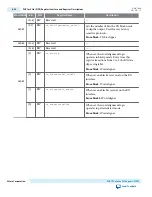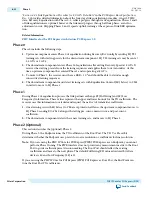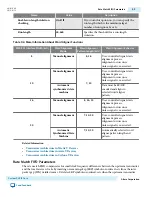
Table 9-2: Custom PHY IP Core Performance and Resource Utilization—Stratix V GT Device
Channels
Combinational ALUTs
Logic Registers (Bits)
1
142
154
4
244
364
Parameterizing the Custom PHY
Complete the following steps to configure the Custom PHY IP Core:
1. Under Tools > IP Catalog, select the device family of your choice.
2. Under Tools > IP Catalog > Interfaces > Transceiver PHY, select Custom PHY .
3. Use the tabs on the MegaWizard Plug-In Manager to select the options required for the protocol.
4. Refer to the following topics to learn more about the parameters:
a.
General Options Parameters
b.
Word Alignment Parameters
on page 9-7
c.
Rate Match FIFO Parameters
on page 9-9
d.
Rate Match FIFO Parameters
on page 9-9
8B/10B Encoder and Decoder Parameters
on page
9-10
e.
Byte Order Parameters
on page 9-11
f.
PLL Reconfiguration Parameters
on page 9-14
g.
Analog Parameters
on page 9-16
5. Click Finish to generate your parameterized Custom PHY IP Core.
General Options Parameters
The General Options tab allows you to set the basic parameters of your transceiver PHY.
Table 9-3: Table 9-3. Custom PHY General Options
Name
Value
Description
Device family
Arria V
Cyclone V
Stratix V
Specifies the device family. Arria V, Cyclone V, and
Stratix V are available.
Parameter validation rules Custom GIGE
Allows you to specify the transceiver protocol. Select
Custom if you are not implementing 1.25 or
2.50GIGE.
Mode of operation
Duplex TX RX
You can select to transmit data, receive data, or both.
Number of lanes
1-32
The total number of lanes in each direction.
Enable lane bonding
On/Off
When enabled, a single clock drives multiple lanes,
reducing clock skew. In Stratix V devices, up to 6
lanes can be bonded if you use an ATX PLL; 4 lanes
can be bonded if you select the CMU PLL.
UG-01080
2015.01.19
Parameterizing the Custom PHY
9-3
Custom PHY IP Core
Altera Corporation
Send Feedback






























